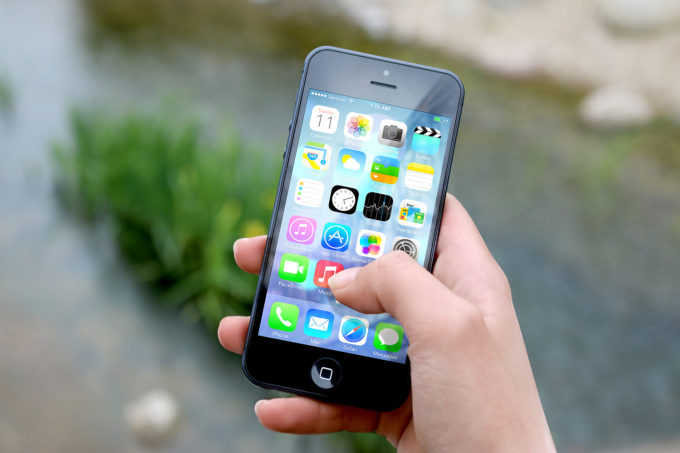
Federal Court Orders Apple to Unlock iPhone. Apple Refuses.
By Filippo Raso – Edited by Frederick Ding
In the Matter of the Search of an Apple iPhone Seized During the Execution of a Search Warrant on a Black Lexus IS300, California License Plate 35KGD203, No. ED 15-0451M (C.D. Cal. Feb. 16, 2016) Order hosted by DocumentCloud.
Magistrate Judge Sheri Pym of the United States District Court for the Central District of California ordered Apple to assist federal investigators in accessing data stored on the iPhone that belonged to the San Bernardino gunman who killed 14 people.
In response to an ex parte motion for assistance from the Department of Justice (“DOJ”), the magistrate judge ordered Apple to provide the Federal Bureau of Investigation (“FBI”) with “reasonable technical assistance” to accomplish three functions aimed at circumventing Apple’s security measures. The magistrate judge accepted the DOJ’s explanation in granting the order. Apple moved to vacate the order. Following Apple’s motion, the DOJ moved to compel Apple’s cooperation, and Apple filed an appeal of the order before a district court judge. At the time of writing, the DOJ delayed the next hearing since it may have obtained an alternative method to circumvent the iPhone’s security without Apple’s assistance.
After the December 2015 massacre in San Bernardino, California, the FBI executed a legal search warrant and discovered an iPhone used by the terrorist. It is uncontested that the search warrant authorizes the FBI to access the contents of the iPhone. However, investigators have been unable to circumvent Apple’s anti–brute-force security features, which include multi-layered encryption, an auto-erase function after ten incorrect passcode attempts, artificial delays between attempts, and disallowing electronic passcode submissions.
Prior to bringing suit, the FBI solicited Apple’s cooperation in the investigation. Apple complied with other warrants, but refused to create software — custom firmware — to circumvent the security measures on the iPhone. The DOJ subsequently filed a motion to compel assistance pursuant to the All Writs Act of 1789 (“AWA”), 28 U.S.C. § 1651 (2014).
The AWA authorizes courts to issue writs, or judicial directives ordering parties to act or refrain from acting in a certain way, “in aid of their respective jurisdictions and agreeable to the usages and principles of law.” The Supreme Court considers three factors to determine if issuing an AWA order is appropriate. First, how far removed the third party is from the underlying controversy. Second, whether the order places an undue burden on the third party. Third, whether the assistance of the third party is necessary to achieve the purpose of the warrant. United States v. New York Telephone Co., 434 U.S. 159 (1977).
In its ex parte motion, the DOJ argues that Apple has the exclusive ability to circumvent non-encryption security measures and suggests ways for Apple to disable the security measures. The DOJ claims that the FBI is unable to make those modifications without Apple’s assistance, for two reasons. First, modifications are not permitted by the software license. Second, Apple hardware only runs software “‘signed’ cryptographically by Apple.” The DOJ claims that the software Apple would create would only function on this particular iPhone.
The DOJ claims the AWA order is appropriate. Apple is not far removed since the iPhone software was designed to require Apple’s ongoing software updates. The order does not place an unreasonable burden since compliance does not require inordinate effort and will be compensated. Assistance is necessary since Apple has the exclusive ability to make and install such software.
Apple’s motion to vacate the order challenges the DOJ’s claim that this software would only be for a single device, citing pending AWA applications in other jurisdictions requesting similar assistance, and comments from state officials indicating their intent to use the AWA to compel assistance for non-terrorism cases. Apple proceeds to argue that the Communications Assistance for Law Enforcement Act, 47 U.S.C. §§ 1001–1010 (2014), prevents the government from “dictat[ing] to. . . manufacturers of telecommunications equipment any specific equipment design or software configuration.” Ultimately, Apple claims this should be a legislative decision and not a judicial one.
Applying the New York Telephone factors, Apple argues the order is inappropriate. Apple claims it is sufficiently far removed since the company is completely unrelated to the San Bernardino shooting. There will be an undue burden placed on Apple beyond the labor of ten dedicated employees for two to four weeks, as the order will “open the floodgates” to other law enforcement agencies following suit. Additionally, the DOJ failed to demonstrate that Apple alone can provide assistance, as the DOJ did not consider involving other parties. On constitutional grounds, Apple also contends that the order violates the First and Fifth Amendments.
The DOJ recently indicated that the FBI may have discovered an alternative method to access the iPhone, which some have argued supports Apple’s claim that its assistance is unnecessary. However, this case remains significant in the ongoing debate about security and privacy by showcasing the tensions between law enforcement and intelligence agencies’ ability to access technical evidence and the right of technology companies to secure devices for their clients. Some claim this would be the first time the federal government has forced an unwilling technology company to circumvent its own security. It also raises existential questions about the courts. For example, what is the judicial role in resolving highly technical cases where Congress has not specifically legislated? Is it appropriate for the judiciary to adjudicate something with such potentially far-reaching implications?
The New York Times provides an overview of the case. Apple has published a letter to its customers. The case has received significant media exposure, including in TechCrunch, NPR, and a segment on John Oliver’s Last Week Tonight. TechCrunch provides analysis of why this case is unimportant in the long-term.